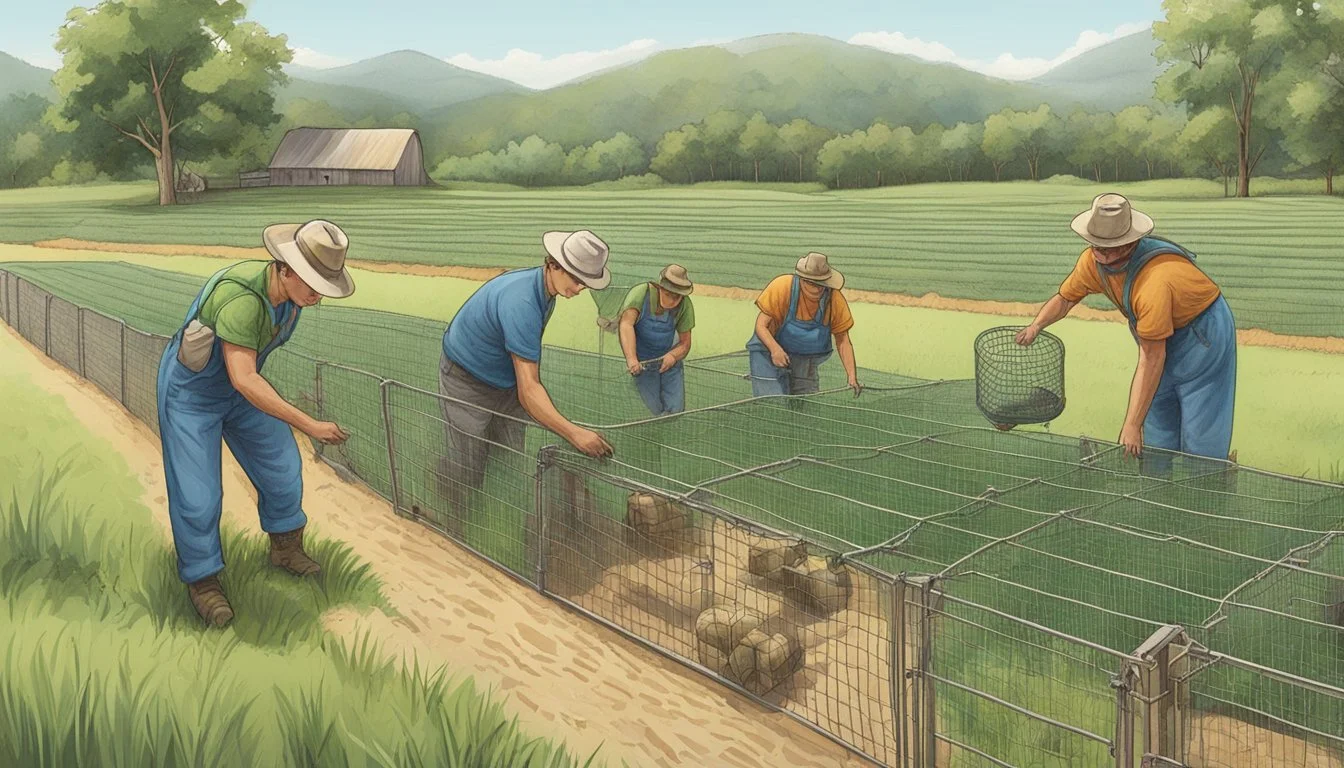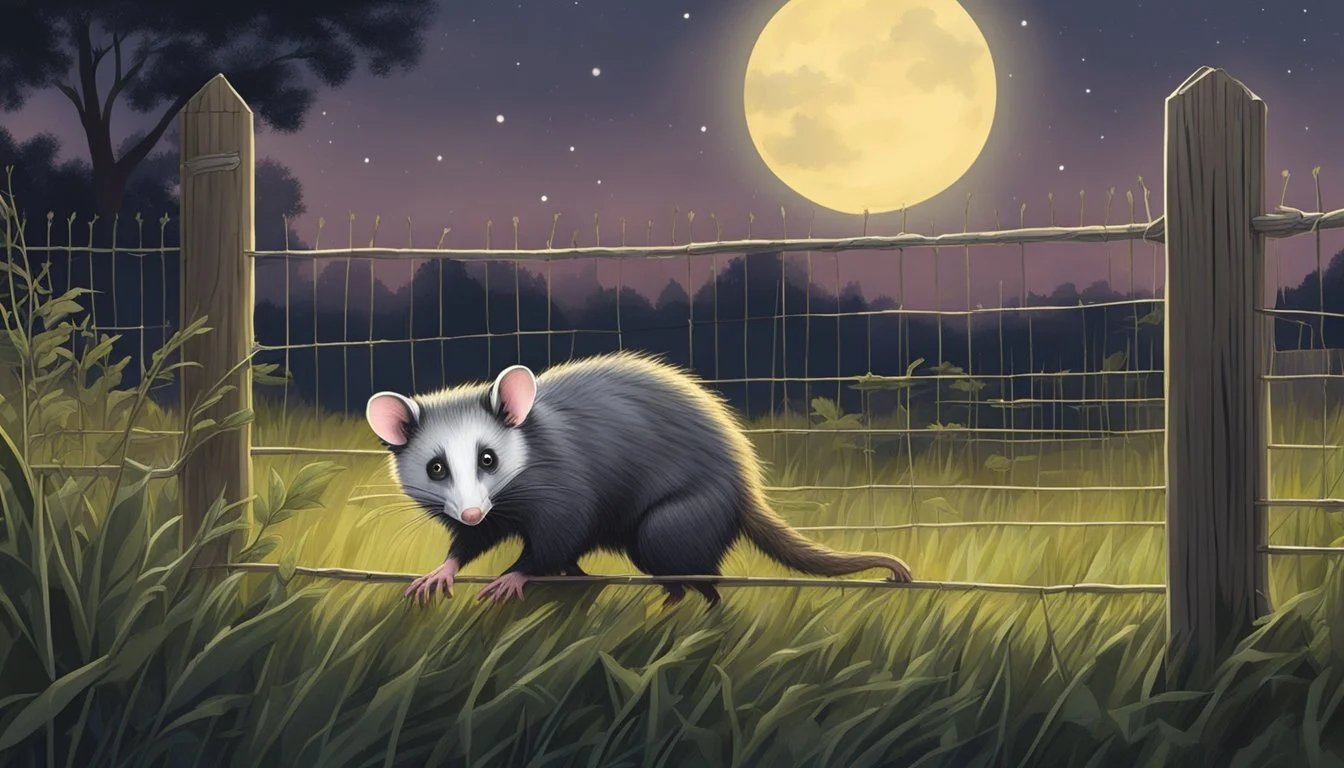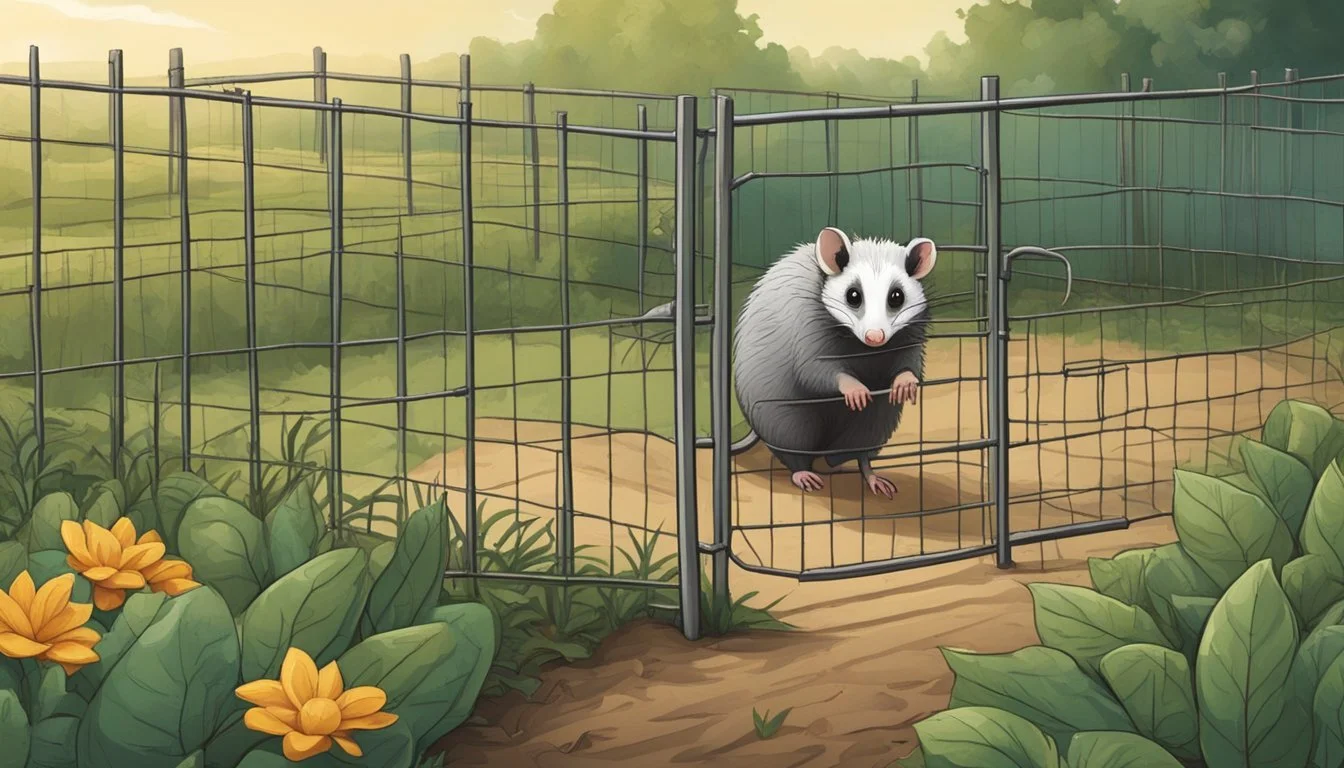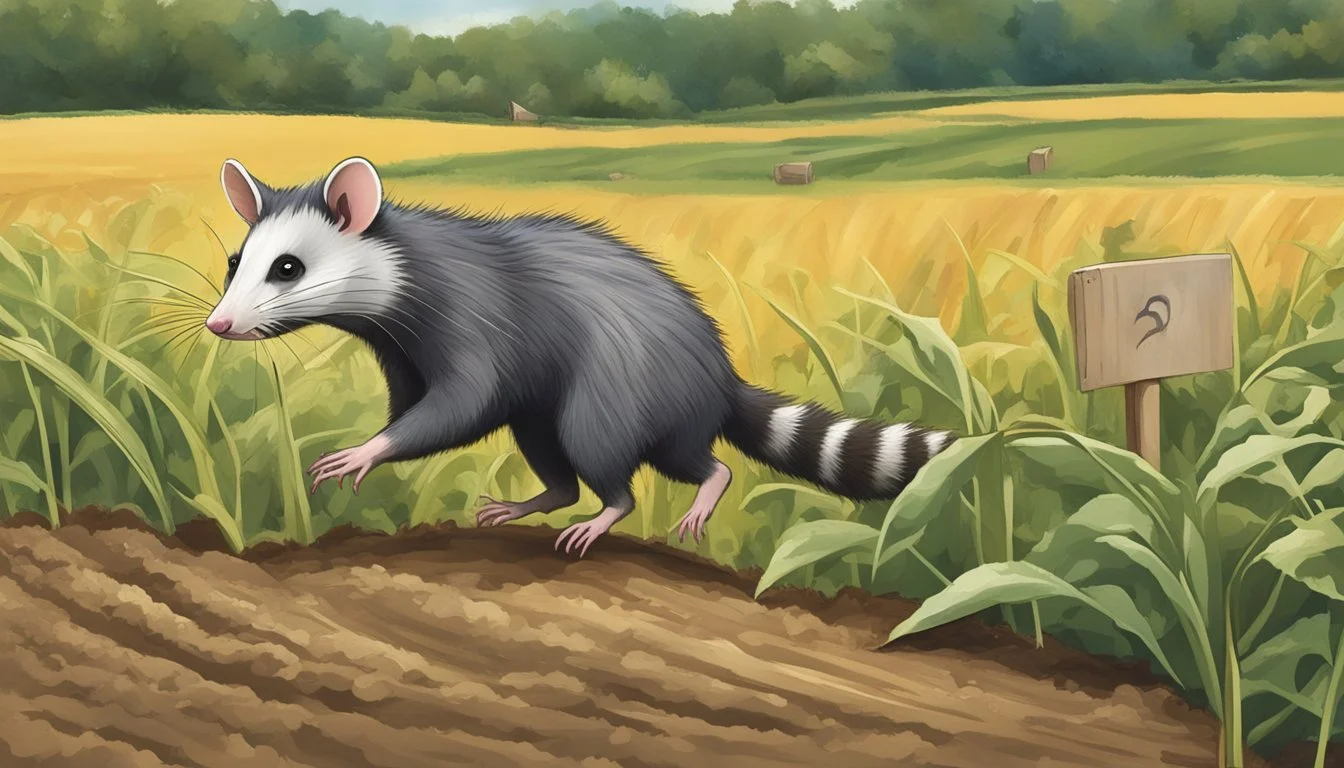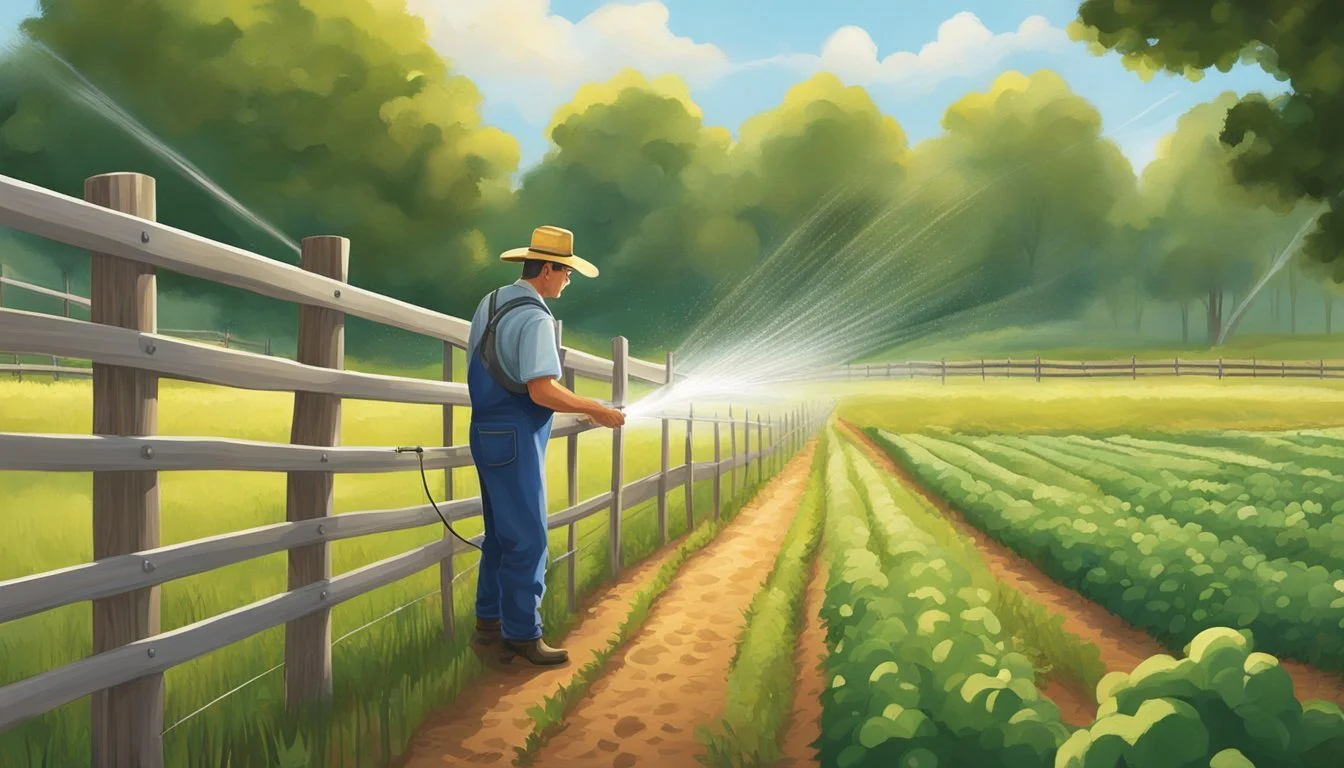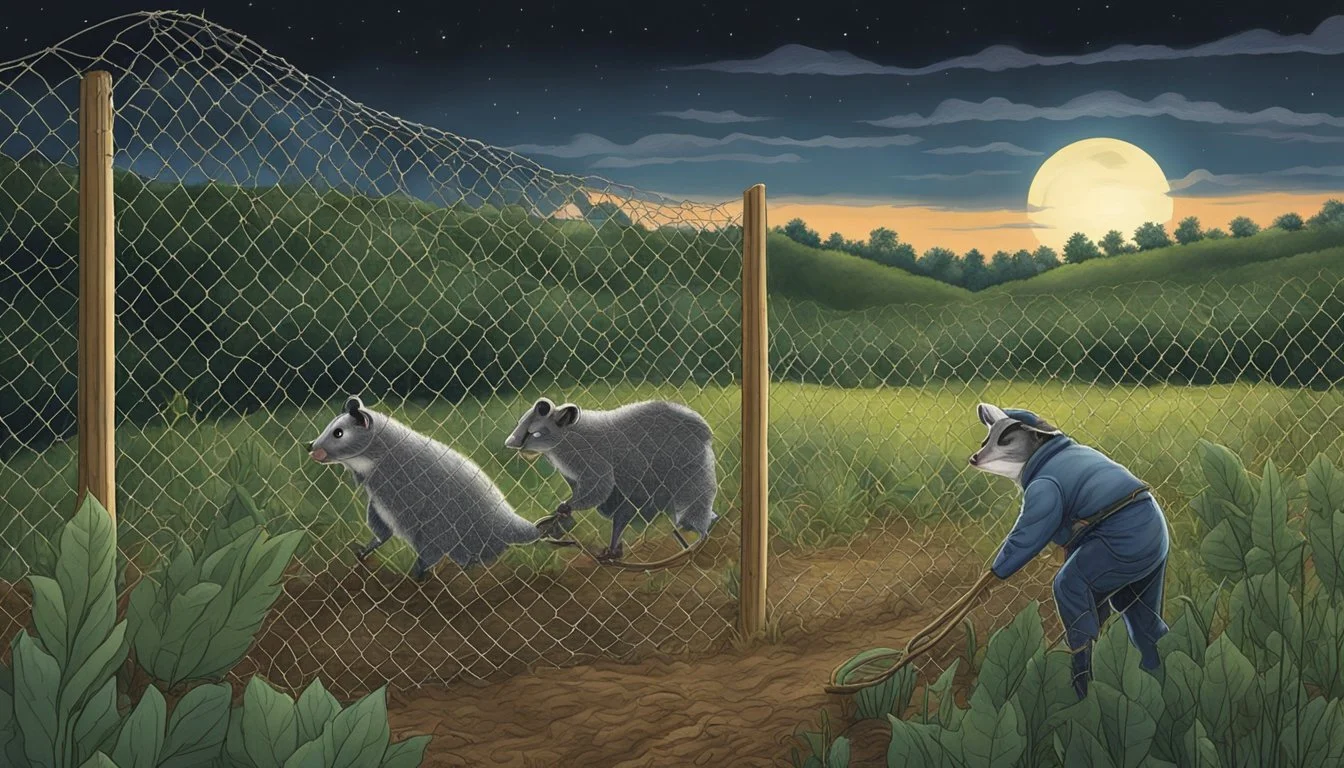Protecting Crops from Virginia Opossum
Effective Strategies for Farmers
Virginia opossums, the only marsupials found in North America, present a unique challenge to agriculturalists and gardeners. As nocturnal animals, they often go unnoticed until the damage to crops and gardens is discovered. Despite their non-aggressive nature and beneficial role in pest control by consuming unwanted insects and carrion, these creatures can negatively impact agricultural areas. They are known to rummage through garbage, uproot plants, and feed on fruits, vegetables, and pet food, which can lead to significant losses for farmers and gardeners alike.
Effective management and protective strategies are essential to safeguard crops from Virginia opossums without harming the natural environment or the opossums themselves. Understanding the behavior and habitat preferences of these marsupials can help in developing methods to prevent crop damage. Farmers can employ various non-lethal measures such as installing fences around gardens or utilizing motion-activated sprinklers to deter opossums from entering the area.
Given their wide geographical range and adaptability, Virginia opossums will likely continue to be a presence in both rural and urban landscapes. Therefore, it becomes imperative to strike a balance between protecting crops and coexisting with the local wildlife. By employing humane and effective deterrents, the harmony between agricultural interests and wildlife conservation can be maintained.
Biology and Physical Characteristics
Understanding the biology and physical characteristics of the Virginia opossum is essential for effectively managing their interactions with crop environments. These aspects play a crucial role in their survival adaptability and potential impact on agricultural settings.
Size and Appearance
The Virginia opossum, a marsupial native to the Americas, presents a size comparable to a domestic cat. Typically, males are larger, averaging about 3 kg (6.6 pounds), while females are slightly smaller at around 2 kg (4.4 pounds). Over the course of the year, particularly in the fall, males can exceed 6 kg (13.2 pounds) due to stored body fat. Their coats consist of dense fur, with individual coloration ranging from a whitish underfur tipped in black to completely white or black. Their ears are often hairless and rounded, and they possess a sturdy build with relatively short legs.
Dental and Facial Structure
Virginia opossums have a distinctive dental structure featuring 50 teeth, more than any other North American mammal. Their face is characterized by a long head, a pointed snout, and a prominent set of canine teeth, which are a critical adaptation for their omnivorous diet.
Tail and Pouch Features
One of the most notable features of this marsupial is its long, prehensile tail, which is mostly hairless and scaly. This tail functions as an additional limb for grasping branches while climbing. Female Virginia opossums are equipped with a pouch, the hallmark of marsupials, where they carry and nurse their young until they are old enough to venture out.
Habitat and Distribution
The Virginia opossum (Didelphis virginiana) is a versatile species with an extensive range in North America, thriving in varied habitats and elevations. This section provides insights into the geographical range of the species and its remarkable adaptation to environments.
Geographical Range
Virginia Opossums are established primarily in North America, extending from Canada through the United States and into Mexico. Their range notably includes southern parts of Ontario, marking the northern edge, and stretches southward into Central America. These opossums are detected in urban areas, indicating their flexible nature in colonizing diverse ecosystems. Their presence on the West Coast and in places like Southern Ontario underscores their adaptability to varied climates and settings.
Adaptation to Environments
Virginia Opossums exhibit vast ecological plasticity, enabling them to occupy multiple habitat types, including temperate woods, open fields, and swamps. Urbanization offers them new niches, which they navigate successfully. They demonstrate tolerance for a range of elevations, from sea level to mountainous regions. This adaptability implies that controlling Virginia Opossums in agricultural contexts is complex, as they can often utilize surrounding environments to their advantage, and any protective measures must consider their behavioral flexibility.
Diet and Foraging Behavior
The Virginia opossum has a highly flexible diet, which allows it to adapt to various environments, hence affecting crop protection strategies. The opossum's eating habits are instrumental in understanding how to safeguard crops from their foraging behavior.
Omnivorous Diet
The Virginia opossum is an omnivore, and its diet constitutes a large variety of food sources. It readily consumes fruits, insects, eggs, small mammals, and even carrion. It is also known to eat pet food when available. In particular, the opossum's need for water is crucial and influences its presence near water-abundant sources like crops irrigated fields.
Fruits: Opossums have a fondness for fruits, often foraging in gardens and orchards.
Insects: These animals help control insect populations, as they are a significant part of their diet.
Eggs and Small Mammals: They occasionally consume eggs and hunt small mammals, impacting local wildlife.
Carrion: As opportunistic feeders, opossums play a role in cleaning up carrion.
Foraging Patterns
Virginia opossums are mostly nocturnal, actively foraging at night. During their search for food, they can become a nuisance to crops and property. Their foraging patterns include rummaging through trash cans, compost piles, and taking advantage of easily accessible food sources such as pet food left outside.
Nocturnal Activity: Opossums typically forage in the dark, which can coincide with the peak growing seasons for certain crops.
Adaptive Behavior: They are known to adapt their foraging habits to urban environments, which can include agricultural spaces.
By understanding the opossum's omnivorous diet and foraging patterns, farmers can implement more effective strategies to protect crops and minimize potential damage caused by these adaptable marsupials.
Reproduction and Lifecycle
The Virginia Opossum's reproduction cycle is significant in understanding how to protect crops, as their breeding habits can influence their presence in agricultural areas. Knowledge of their mating patterns and offspring development is critical for determining the times of year they may be most intrusive.
Mating Habits
Virginia Opossums have a distinctive breeding season which generally happens from January to July. During this time, they may have 1-3 litters per year, which can increase population densities near croplands. The gestation period for a Virginia Opossum is notably short, around 13 days. The male attracts a female by making clicking sounds, and after mating, the female gives birth to undeveloped young that immediately crawl into her pouch to continue development.
Development and Maturation
Once the young opossums are born, they find their way to one of the female's nipples and attach to it. Development continues in the safety of the mother's pouch for about 50 to 70 days before the young emerge. During this pouch phase, the juveniles grow rapidly. They then ride on their mother's back until they are able to survive independently, generally between 80 to 90 days after birth. Understanding this development timeline is essential, as interference from humans can disrupt the lifecycle and possibly lead to increased opossum activity in search of food, which includes crops.
Health and Predation
Virginia opossums are unique in their interactions with diseases and predators, demonstrating significant disease resistance but still facing risks from common predators. Their ability to adapt to environments where predator-prey dynamics are altered by human presence has implications for crop protection strategies.
Disease Resistance
Virginia opossums (Didelphis virginiana) exhibit a strong resistance to many diseases that are common to other wildlife species. Notably, they are one of the few mammalian species with a natural immunity to rabies, a viral disease that poses significant health risks to humans and other animals. Additionally, opossums help control the populations of ticks, thereby reducing the spread of tick-borne illnesses.
Rabies: Remarkably low susceptibility in Virginia opossums.
Ticks: Opossums consume ticks, limiting Lyme disease vectors.
In terms of parasitic infections, opossums can be carriers of Sarcocystis neurona, a parasite known to cause equine protozoal myeloencephalitis. However, their role in the transmission of this disease to other species, including horses, is complex and influenced by various ecological factors.
Common Predators
Despite their resilience to certain health threats, Virginia opossums are not without their natural enemies. They are solitary creatures and can fall prey to a variety of predators that share their habitat, including:
Raccoons: Occasional predators of opossums, especially juveniles.
Snakes, Reptiles, and Amphibians: These groups can prey on opossums, although less frequently.
Birds: Larger birds of prey, like owls and hawks, may hunt young or smaller opossums.
The predators of Virginia opossums are often deterred by human development, with opossums finding some protection from living close to human structures. Their presence in such areas may disrupt the usual predator-prey interactions, which is a factor to consider when looking to protect crops from opossums.
Behavior and Social Structure
Understanding the behavior and social structure of the Virginia Opossum is critical for devising effective crop protection measures. These marsupials are typically solitary and nocturnal creatures, with unique adaptations such as a prehensile tail aiding in their arboreal lifestyle.
Social Interactions
Virginia Opossums tend to lead a solitary existence. Interactions among individuals usually occur primarily during the mating season or when a mother is with her young. They are not known for forming social bonds in the same way some mammals do, though nonagonistic behavior such as sharing nesting spaces can occasionally be observed. Their interactions tend to be more passive than aggressive, reflecting a need for individual space rather than a hierarchy or communal living.
Territorial Range
The home range of a Virginia Opossum can vary widely. These animals are generally not territorial in the aggressive sense, but they do have a defined home range where they forage and live. The size of this range can be influenced by food availability and the density of the opossum population in the area. Home ranges often overlap, and the prehensile tail of the Virginia Opossum plays a significant role in allowing these animals to navigate and interact within their arboreal environments during their primarily nocturnal activities. The spatial understanding of an opossum's range is vital for assessing the risk to crops and implementing preventive strategies accordingly.
Challenges and Conservation
The interactions between humans and Virginia opossums pose unique challenges, particularly when it comes to agriculture, as these marsupials often venture into urban areas in search of food. Conservation efforts are crucial for maintaining ecological balance while protecting crops.
Human-Wildlife Conflict
Virginia opossums, often just called opossums, are opportunistic feeders that sometimes cause issues for people living in urban or farming communities where they are introduced or naturally occur. These mammals, indigenous to Mexico, Costa Rica, and other parts of the Americas, have adapted to urban environments, leading to conflicts with humans as they forage in gardens and may damage crops.
Conservation Efforts
Efforts to conserve the species while protecting crops center around non-lethal methods and understanding the Didelphis genus biology and behavior. Habitat modification and exclusions, such as fencing, can be effective. Educating local communities about the predators' ecological role can also mitigate conflicts and foster coexistence.
Crop Protection Strategies
Protecting crops from the Virginia opossum requires a multifaceted approach. These strategies can mitigate the impact of opossums in both rural and suburban farms and gardens.
Physical Deterrents
Fences: A sturdy fence around the farm or garden can effectively deter opossums. Buried underground and standing at least 3 to 4 feet high, a fence should have a curved top portion to prevent opossums from climbing over.
Covers and Netting: For smaller areas like gardens, the use of netting or covers on fruit bushes and vegetable patches can prevent access by opossums. Ensure that these covers are well-secured and checked regularly for signs of wear or tampering.
Cultural Practices
Sanitation: Maintaining cleanliness by securing garbage in rugged containers with locking lids reduces attractants for opossums. It is essential to eliminate accessible food sources in both rural and suburban settings.
Habitat Modification: Regularly clear any brush or debris piles near the farm or garden. Such habitats can provide shelter for opossums, so their elimination can make the area less inviting to these animals.
Wildlife Management
Live Trapping: Safely capturing and relocating opossums can be done using live traps. It's important to check regulations, as they can vary by region, and to use humane methods when relocating these native animals.
Exclusion Techniques: Install barriers and access restrictions to compost bins, and consider using metal flashing around the bases of trees or buildings to prevent opossums from climbing.
By implementing these strategies, farmers and gardeners can effectively protect their crops from the potential damage caused by the Virginia opossum, helping to preserve both historic and contemporary agricultural efforts.
Understanding Opossum Behavior
To effectively protect crops from the Virginia Opossum, it is essential to understand their behaviors, particularly those related to food attraction and their adaptability to human environments.
Attractants and Repellents
Attractants:
Odor: Opossums are attracted to strong and distinctive odors because of their omnivorous nature, leading them to fruits, vegetables, and discarded food.
Omnivorous Diet: They willingly consume a wide variety of foods, framing them as opportunists which can include crops, pet food, and garbage.
Repellents:
Opossums typically avoid certain smells, such as the odor of ammonia or mothballs.
Chemical repellents can sometimes deter opossums, but they need to be used cautiously to avoid harm to the crops.
Habituation and Avoidance
Habituation:
Opossums may become habituated to repellents or scare tactics if those are used consistently without variation.
They quickly learn to ignore such efforts if there is no immediate negative consequence.
Avoidance:
Include motion-activated sprinklers or lights which can startle and discourage these nocturnal creatures from lingering around crops.
Creating a more complex physical barrier, such as netting or fencing but be warned about their prehensile tails, which allow for agile climbing.
It's noteworthy to consider that while opossums can consume venomous snakes, this trait is less beneficial in the context of crop protection and more indicative of their adaptability and varied diet.
Legal Considerations and Wildlife Laws
When protecting crops from Virginia opossums, it's critical to understand and comply with the pertinent wildlife protection laws and regulations. Failure to do so can result in legal consequences.
Wildlife Protection Legislation
In the United States, wildlife is safeguarded by federal laws such as the Endangered Species Act, which mandates that endangered species and their habitats be protected, although the Virginia opossum is not currently listed as endangered. For broader legal context, Canada has its own federal legislation, the Wildlife Act, particularly in provinces like British Columbia, protecting various species and their environments.
Local and State Regulations
Each state has specific statutes that govern the handling of opossums. For instance, in Virginia, landowners are allowed to take lethal action against opossums on their own property during the closed season, but it's necessary to check with the Commonwealth Attorney's office for legal removal methods. Furthermore, Illinois and Ontario have their own sets of wildlife regulations which must be adhered to, often varying significantly from one jurisdiction to another. Local ordinances, especially in more densely populated areas, tend to be stricter than state laws.
Impact on Local Ecosystems
Virginia opossums play a multifaceted role in local ecosystems, balancing their position as both a pest to crops and a contributor to environmental health. They participate in natural pest control and provide ecosystem services that can benefit agriculture indirectly.
Role in Pest Control
Marsupials, like the Virginia opossum, serve an important role in controlling pests. They consume a variety of unwanted insects and have a positive impact on the reduction of tick populations. As opportunistic feeders, they help keep certain agricultural pests in check, which can include various beetles and other insects damaging to crops. Consequently, their presence in farmlands can be beneficial to farmers by naturally mitigating pest numbers.
Ecosystem Services
The ecosystem services provided by Virginia opossums extend beyond pest control. These marsupials are scavengers, aiding in the decomposition process by consuming carrion, which helps recycle nutrients back into the ecosystem. Their diet includes fruits and seeds, leading to seed dispersal that can contribute to plant diversity and health of habitats. However, these attributes must be balanced with their potential to prey on amphibians, reptiles, and ground-nesting birds, albeit less frequently than other predators. By maintaining a complex food web, Virginia opossums support ecosystem robustness, which is vital for the overall health of the environment, including agricultural lands.
Practical Tips for Farmers and Landowners
Protecting crops from the Virginia opossum requires strategic and humane management practices. These interventions can protect both crops and the local wildlife while maintaining the balance between farm productivity and ecological conservation.
Best Practices
Farmers and landowners can adopt several proactive measures to safeguard their gardens and fields effectively. Securing trash cans, removing pet food at night, and ensuring compost bins are well-sealed will deter opossums from foraging near human habitations.
Fencing is an effective measure, especially for gardens in both rural and suburban areas. Installing a fence that is at least 4 feet high, with the bottom buried several inches underground, can prevent opossums from digging underneath.
For rural farms, consider deploying motion-activated sprinklers or lights that can startle and discourage opossums without harming them. One should also clear any dense brush or hiding places near crop fields that may serve as opossum shelter.
Community Initiatives
Creating community education programs can help landowners and local residents better understand the behavior of Virginia opossums and the role they play in the ecosystem. These programs may highlight humane exclusion techniques and proper trash management.
Local workshops or online webinars can offer hands-on training and share success stories about non-lethal methods for keeping opossums away from crops. Landowners should consider collaborating with local conservation groups or extensions to stay informed about best practices for managing wildlife interactions.
Sharing resources like fencing materials or non-harmful deterrents can help distribute the cost burden and motivate community-level engagement. This approach has shown success in both rural and suburban settings, fostering a communal spirit in addressing shared challenges.
Behavioral Adaptations to Urbanization
The Virginia opossum has demonstrated a notable ability to adapt to urban environments, displaying distinct survival strategies and interactions with humans and pets.
Urban Survival Strategies
In urban areas, Virginia opossums exhibit remarkable adaptability to varying degrees of human presence. They are known for their opportunistic feeding habits, often foraging in garbage cans and compost piles for food. They capitalize on the abundance of food waste produced in urban settings, which provides a consistent food source. Additionally, they have adapted to utilize shelter in and around human structures, finding refuge in abandoned buildings, brush piles, and under decks. These strategies enable them to thrive in cities and suburbs.
Interaction with Humans and Pets
Interaction between Virginia opossums and residents in urban settings can be complex. Generally, opossums are nocturnal and tend to avoid confrontation with pets and humans. However, when encounters occur, they may play dead as a defense mechanism or, less commonly, become defensive if cornered. Pet owners are often advised to monitor their outdoor pets at night to prevent potential conflicts. It's crucial for urban dwellers to secure their garbage and utilize opossum-proof containers to minimize these interactions.
Frequently Asked Questions
This section addresses common concerns about how to protect crops from Virginia opossums and the methods to safely manage their presence.
How can I deter opossums from invading my garden?
To deter opossums, homeowners can remove potential food sources such as pet food and fallen fruit, secure garbage cans, and eliminate accessible shelter like brush piles. Some preventive measures also suggest securing the perimeter of the garden with fencing that extends underground to prevent digging.
What are effective methods for preventing opossums from eating my plants?
Protecting your plants from opossums can be effectively managed by installing motion-activated lights or sprinklers to scare them away. Enclosures for plants and electric fencing may also serve as barriers, and keeping your garden tidy can reduce the appeal to these creatures.
What natural predators can discourage opossum presence in a backyard?
Opossums have natural predators like dogs, coyotes, and large birds of prey. Their presence on a property can act as a deterrent, but it's vital to consider the broader impact of encouraging predators in residential areas.
Can humanely trapping and relocating opossums prevent crop damage?
Trapping and relocating opossums may reduce damage temporarily, but this solution should be done humanely and in accordance with local wildlife regulations. Habitual exclusion practices provide a more sustainable solution for crop protection.
Are there any diseases that opossums can transmit to humans through crop contamination?
Yes, opossums can carry diseases such as leptospirosis, tuberculosis, and toxoplasmosis. These can be transmitted to humans and pets through contact with the opossum's feces, urine, or saliva, which may contaminate crops. Understanding these risks is essential for ensuring food safety and public health.
What smells or substances are known to repel opossums from gardens?
Repellents such as ammonia, mothballs, and garlic may be used to keep opossums away from gardens. It's important to reapply these substances regularly and to follow usage instructions to avoid plant damage.

